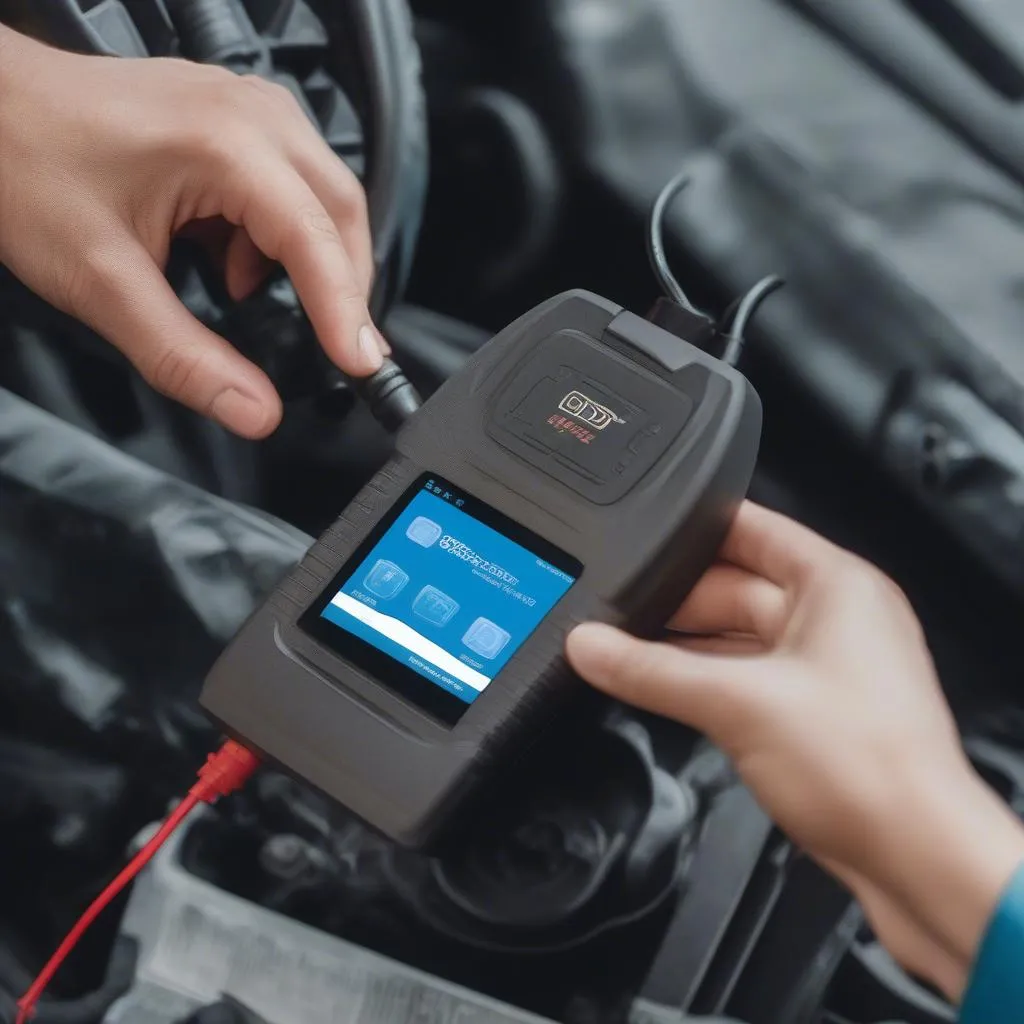Imagine you’re driving down the road when your car starts acting strange. The engine sputters, the check engine light flashes, and you have no idea what’s wrong. You’re stuck on the side of the road, wondering if you’ll ever get to your destination. This is a scenario that many drivers have faced, and a diagnostic tool like an OBD1 scanner can be your lifesaver.
Understanding OBD1 Diagnostic Tools
OBD1 stands for “On-Board Diagnostics 1,” and it’s a system that helps you diagnose problems with your car’s engine. OBD1 diagnostic tools can be used to read and clear trouble codes, monitor engine performance, and even track your car’s fuel economy. The OBD1 system was introduced in the late 1980s and early 1990s, and it’s still used in some vehicles today.
What Does an OBD1 Diagnostic Tool Do?
OBD1 diagnostic tools are valuable tools for anyone who wants to understand their car better. They allow you to:
Read Trouble Codes
Your car’s engine computer stores trouble codes when it detects a problem. These codes can help you identify the source of the problem. For example, code “12” indicates a problem with the coolant temperature sensor. Some OBD1 diagnostic tools allow you to read these codes and translate them into plain English.
Monitor Engine Performance
You can monitor various engine parameters such as engine speed (RPM), coolant temperature, and fuel pressure. This data can help you understand how your engine is performing and identify potential problems before they become serious.
Track Fuel Economy
Some OBD1 diagnostic tools can track your car’s fuel economy, helping you understand how efficiently your car is using fuel and how your driving habits affect fuel consumption.
Common OBD1 Diagnostic Tool Applications
Troubleshooting Engine Problems
One of the most common uses of OBD1 diagnostic tools is troubleshooting engine problems. Let’s say your car is running rough. An OBD1 diagnostic tool can help you identify the source of the problem by reading trouble codes, monitoring engine performance, and comparing data to factory specifications.
DIY Maintenance
Many people use OBD1 diagnostic tools for DIY maintenance. You can use an OBD1 tool to monitor your car’s engine performance and ensure it’s running efficiently. You can also use it to track fuel economy and make adjustments to your driving habits to improve efficiency.
Pre-purchase Inspections
When buying a used car, you can use an OBD1 diagnostic tool to perform a pre-purchase inspection. This can help you identify potential problems that might not be obvious to the naked eye.
Frequently Asked Questions about OBD1 Diagnostic Tools
What is the difference between OBD1 and OBD2?
The main difference between OBD1 and OBD2 is the protocol used to communicate between the diagnostic tool and the car’s engine computer. OBD2 is more advanced and offers more information than OBD1.
Is an OBD1 diagnostic tool worth it?
Whether an OBD1 diagnostic tool is worth it depends on your needs and your car. If you have an older car or you like to do your own maintenance, an OBD1 diagnostic tool can be a valuable investment.
Where can I buy an OBD1 diagnostic tool?
You can buy OBD1 diagnostic tools from a variety of online retailers and auto parts stores. Prices vary depending on the features and capabilities of the tool.
Can I use an OBD1 diagnostic tool on any car?
No, not all cars are compatible with OBD1 diagnostic tools. Older cars, particularly those manufactured before 1996, are more likely to use the OBD1 protocol.
Do I need any special knowledge to use an OBD1 diagnostic tool?
While basic OBD1 diagnostic tools are relatively easy to use, you may need some basic knowledge of car mechanics to interpret the data.
Can I use an OBD1 diagnostic tool to clear trouble codes?
Yes, most OBD1 diagnostic tools allow you to clear trouble codes. This can be helpful if you’ve fixed a problem and want to reset the engine computer.
Key Considerations When Choosing an OBD1 Diagnostic Tool
Here are some key considerations to keep in mind when choosing an OBD1 diagnostic tool:
- Compatibility: Ensure the tool is compatible with your vehicle’s year, make, and model.
- Features: Consider the features you need, such as trouble code reading, data logging, and live data monitoring.
- Ease of use: Look for a tool that is user-friendly and easy to understand.
- Price: Prices vary depending on features and capabilities. Determine your budget and choose a tool that fits your needs.
OBD1 Diagnostic Tools – Your Gateway to Car Knowledge
OBD1 diagnostic tools are valuable tools for understanding your car’s engine and identifying potential problems. They can empower you to take control of your car’s maintenance and save money on costly repairs.
 OBD1 Diagnostic Tool
OBD1 Diagnostic Tool
Still have questions about OBD1 diagnostic tools? Reach out to us on Whatsapp: +84767531508. We’re here to help you understand your car better!